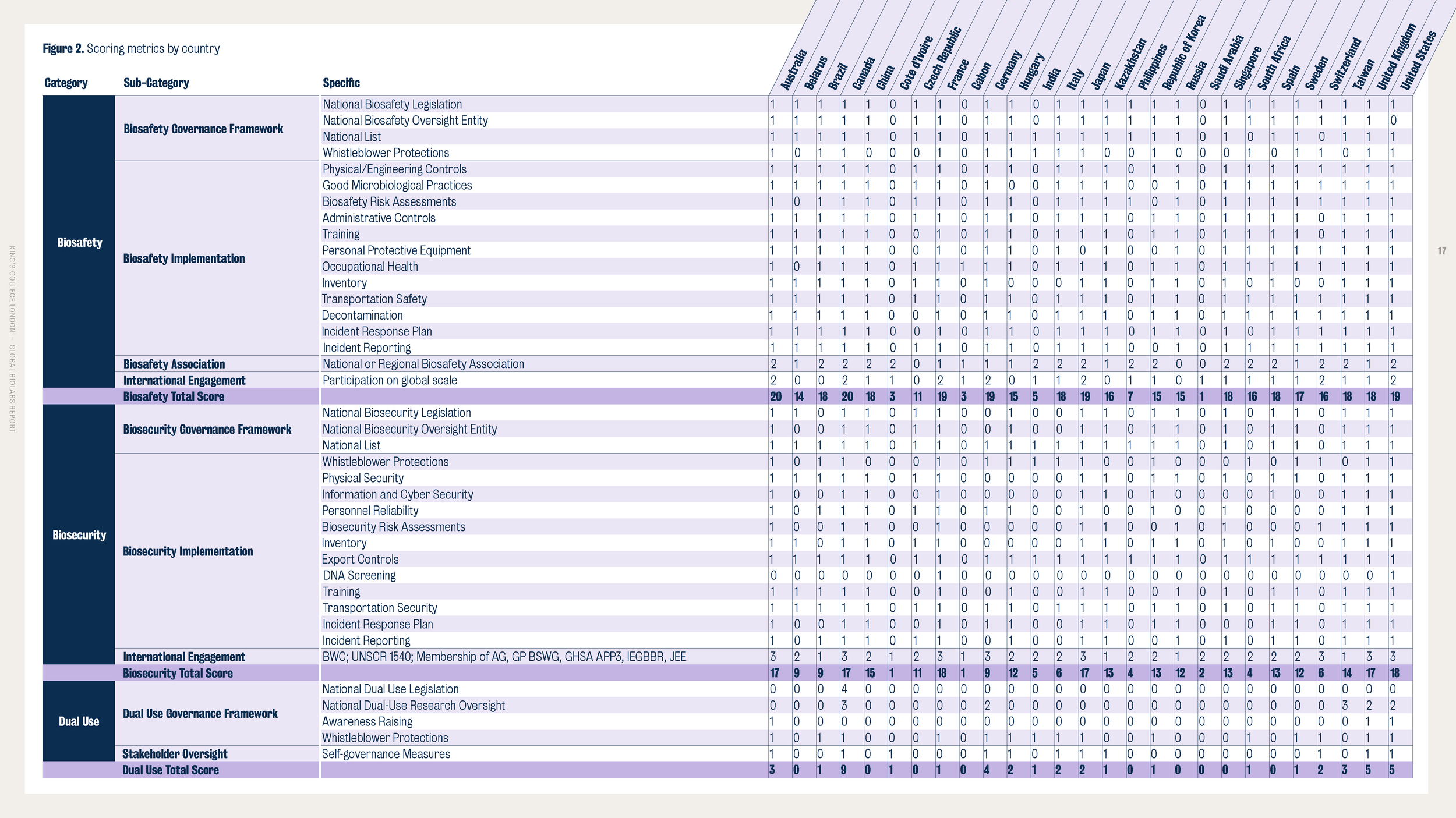Methodology
Biorisk Management
The Biorisk Management scorecards provide an in-depth, objective assessment of biorisk management in the 27 countries around the world with BSL-4 labs.
A set of metrics for national oversight and implementation of biosafety (18 metrics), biosecurity (18 metrics) and dual-use (5 metrics) measures were developed based on best practices in international standards. The standards drawn on were: ISO Standard 35001 Biorisk management for laboratories and other related organizations, CEN Workshop Agreement CWA 15793:2008 on Laboratory biorisk management standard, WHO’s Joint External Evaluation, NTI’s Global Health Security Index, GHSA’s APP3, and the WHO’s Benchmarks for IHR Capacities.
Scores were allocated through examination of publicly available national governance measures.
Biosafety, Biosecurity, and Dual Use
Governance
Based on five 2020 World Bank Global Governance Indexes (on government effectiveness, regulatory quality, rule of law, control of corruption, and voice and accountability), the 2021 Freedom House Freedom in the World Index and the 2021 Transparency International Corruption Perceptions Index, individual country scores were calculated as composite percentiles to provide a single overall performance score in governance.
Percentile ranking does not allow a country’s performance to be evaluated in absolute terms, but rather shows its relative ranking compared with other countries. Percentile ranking means outlier index scores do not distort the overall score as it is the relative position that is assessed, but the method does reward the best performing countries and penalizes the worst.
The formula used was:
Percentile Rank = [(M + (0.5 × R)) / Y] × 100
Where:
M = number of ranks below X (X as subject country’s score)
R = number of ranks equal to X
Y = total number of ranks
Each country’s percentile ranking was averaged to produce the composite score.
Stability
Country scores were compiled from the 2021 Global Peace Index, the 2021 Global Terrorism Index, the 2020 Fragile States Index, the 2021 Nuclear Threat Initiative Global Health Security Overall Risk Environment Index, and the 2020 World Bank Global Governance Index on political stability and absence of violence/terrorism.
Percentile ranking does not allow a country’s performance to be evaluated in absolute terms, but rather shows its relative ranking compared with other countries. Percentile ranking means outlier index scores do not distort the overall score as it is the relative position that is assessed, but the method does reward the best performing countries and penalizes the worst.
The formula used was:
Percentile Rank = [(M + (0.5 × R)) / Y] × 100
Where:
M = number of ranks below X (X as subject country’s score)
R = number of ranks equal to X
Y = total number of ranks.
Each country’s percentile ranking was averaged to produce the composite score.
